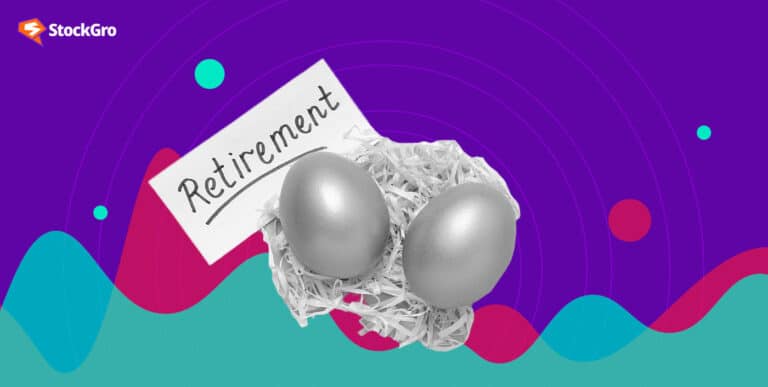
Did you know modern-day investments trace back to 1602 when the first stock exchange, the Amsterdam Stock Exchange, was established? Fascinating, right? However, the most surprising fact is that the basics of this exchange are the same as those of the stock exchange today.
Investments have existed in different forms for years, long before the contemporary, sophisticated system emerged.
While some investments reap a high return on investment, some yield low returns. If you are one of the investors wondering about the various high-yield investment opportunities and risks, here is the perfect blog for you!
What are high-yield investments?
Before diving into the depths, let’s first try to understand what a high-yield investment means. Usually, high-yield investments are the investments that reap large returns that top the market average.
Now, you might wonder why people go for diversification in investments rather than investing all their money in high-yield investments. The answer to your query lies in risk.
Often, risk and reward in investing depend on each other, meaning a higher yield might equate to higher risks and losses. With this basic understanding, it is time to check out some of the high-yield investment opportunities and risks in the market!
- Equity shares
Equity shares are a form of investment where you obtain a piece of ownership in a company by purchasing its stocks. Investing in equity shares, especially in the long term, fetches you two types of returns:
- Dividend income – A portion of company profits declared as dividends
- Capital appreciation – An increase in your stock’s price
Apart from obtaining these returns, equity shares also experience compounding, which helps multiply your investment value, making them one of the most lucrative forms of investment.
As profitable as these investment strategies seem, they also have high-risk factors, and this comes in the form of:
- Systematic risk – Risk factors such as political and economic events.
- Unsystematic risk – Risk factors such as the performance of the company and its management and financial stability.
Therefore, it is always best to first assess your risk tolerance, research the patterns and trends of the company shares and conduct a thorough fundamental analysis before you pursue this investment strategy.
Also read: Gilt-edged securities: A safe and profitable investment option in India
- Mutual funds
Mutual funds are an assortment of various financial securities, such as equity and debt funds, that fund managers manage. If you are looking for diversification in investments, mutual funds are one of the best investment strategies!
The best part about mutual funds is that since they are completely managed by fund managers, the composition of your portfolio is automatically adjusted based on market trends.
Like equity shares, mutual funds generate high returns due to dividends and capital appreciation. These funds can also be used for capital preservation.
However, there is no denying the fact that mutual funds, too, are influenced by market risks. If your investment portfolio risks are on the higher side, you will also face the risk of volatility.
Lastly, mutual funds also come with management risk; that is, if the manager of the fund underperforms, you will not obtain your expected returns.
- Pre-IPO investments
Pre-IPO stocks are the stocks of those companies that have not gone public yet in the stock market. The biggest advantage of investing in these stocks is that you can obtain shares of a company at a fraction of its market price and hence generate a higher rate of returns, especially if the company offers innovative solutions.
You can hold on to these stocks or even exit the market during the IPO allocation. Since the number of investors is lesser in pre-IPO investments, these shares are less volatile!
However, there are high investment risks due to a lack of past records or performance history of the company to ascertain if it will fetch you high returns. With a smaller number of investors, you may also end up facing a liquidity crisis.
Lastly, these companies are usually in their early stages, which means the chances of their failure are significant, and if they fail, you will face capital losses.
- High-yield bonds
High-yield bonds are issued by corporations and are a form of debt securities which help you accrue higher returns than investment-grade bonds. Usually, high-yield bonds are issued by capital-intensive firms with high debt ratios and those whose credit ratings have declined over time.
Now, you might be wondering why these bonds offer higher returns than the traditional ones. Well, it is because these bonds have lower credit ratings and, hence, pose a default risk. So, at the risk of losing your principal, you can expect a return of an insane rate of interest.
Since not all bonds default, these investment strategies are particularly lucrative for yield-chasing in times when the interest rates offered by banks are low.
- Real estate investments
Under real estate investments, there are two investment strategies that you can adopt, and they are:
- REITs: Real Estate Investment Trusts (REITs) are basically investment trusts that own and operate various real estate projects and generate regular income in the form of rent apart from capital appreciation.
- InvITs: Infrastructure Investment Trusts (InvITs) are investment trusts that own and operate infrastructure-based projects such as roads, highways, and warehouses. The returns are again in the form of capital appreciation and regular income.
The best part about these investment strategies is that you can enter the real estate market with a small amount of capital and reap high returns.
REITs are traded on the stock exchange and are influenced by the market forces of supply and demand. This means that the investors’ sentiments can greatly swing your net returns.
Coming to InvITs, these financial instruments are highly regulated by government and regulatory policies, which means any political crisis or regulatory crisis will greatly depreciate your capital value.
Also Read: Path to financial freedom: Your financial literacy PDF guide
Conclusion
So, these are the various high-yield investment opportunities and risks available in the market. Before you begin your investment journey, remember that financial risk management is the first thing you must do.
Assess the various investment strategies and determine which ones are right for you. Lastly, remember that since these are high-yield investments, you may also face heavy losses, so only proceed if you are willing to take that risk!
If you have further queries, visit our StockGro website for further clarity!

